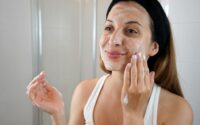Will it impact runners’ health?
It’s time for the annual ritual known as “spring forward, fall back.”
This fall, daylight savings time (DST) officially ends at 2:00 a.m. on Nov. 5 — the same day as another annual ritual, the New York City Marathon.
But there’s a growing awareness that DST is an antiquated relic from World War I, and the twice-yearly switcheroo has been vilified from the halls of Congress to your doctor’s office.
“That one-hour change may not seem like much, but it can wreak havoc on people’s mental and physical well-being,” Dr. Charles Czeisler, professor of sleep medicine at Harvard Medical School’s Division of Sleep Medicine, said in an interview.
And for people running one of the most grueling endurance events known to man — a race through Gotham on 26.2 miles of concrete, asphalt and chewing gum — any sleep disruption could mean the difference between a triumphant finish and the agony of defeat somewhere in an outer borough.
“Disrupted sleep can cause people to feel fatigued, groggy and less focused,” said Dr. Czeisler.
That combination spells dangers on the roadways: A 2020 study in the journal Current Biology revealed that the autumn time change was followed by a 6% overall crash increase, with even higher increases for freeway crashes (15%), non-intersection crashes (9%), nighttime crashes (28%), single-vehicle crashes (28%) and crashes in urban areas (12%).
The spring shift to DST is considered a key health factor for disease. The week after the change sees a 24% higher risk of heart attacks and an 8% increase in stroke, research shows. It also brings a raft of mental health and cognitive problems, with an 11% jump in depressive episodes, and digestive and immune-related diseases, such as colitis, which increase by 3% in females over age 60.
“The science has evolved over the last decade to show the transition between standard time and DST is associated with adverse health consequences,” Dr. Phyllis C. Zee, sleep medicine specialist in the Department of Neurology at Northwestern Medicine, said in an interview.
“With DST, between March and November, your body is exposed to less morning light and more evening light, which can throw off your circadian rhythm,” said Zee.
“If we adopt permanent standard time, our internal clocks will more likely be in sync with the rotation of the Earth, seasonal changes and the sun clock,” Zee added.
It’s not just wary doctors and weary runners who support the end of DST: In 2022, the US Senate passed the Sunshine Protection Act, which would make daylight saving time permanent, but the House of Representatives put the legislation on a shelf. Even after Florida Sen. Marco Rubio reintroduced the bill in March 2023, it has gained virtually no traction.
“I know this is not the most important issue confronting America, but it’s one of those issues where there’s a lot of agreement,” Rubio told Reuters. “If we can get this passed, we don’t have to do this stupidity anymore.”
“Pardon the pun, but this is an idea whose time has come,” Rubio added. He has plenty of company: A 2019 poll revealed that 71% of Americans prefer to do away with DST.
How NYC marathon runners can prevent the effects of DST
The best way for runners to fare the shift is to gradually alter their bedtime in the lead-up to the day.
About three days before the time change, go to bed and wake up 10 to 15 minutes earlier in spring, and later in fall. The next night, aim for 20 to 30 minutes, and then 30 to 45 minutes on the third night.
“By the end of this period, your body would have adjusted to that lost hour, and you won’t have the stress of trying to quickly catch up on sleep,” said Dr. Czeisler.
If you feel tired in the afternoons after DST starts, take brief midday naps for 20 to 30 minutes (napping longer than that can make you feel even more groggy).
During the first week after the time change, runners should try to get about 15 minutes of exposure to morning light, or use a light box that produces a bright white light.
After the springtime change, postpone your daily routine for an hour. “Your internal clock is still running an hour behind, so you give it a chance to adjust,” said Dr. Czeisler.
And, as runners know, ease off the alcohol and caffeine several days before and after the time change, as they can disrupt your sleep.


